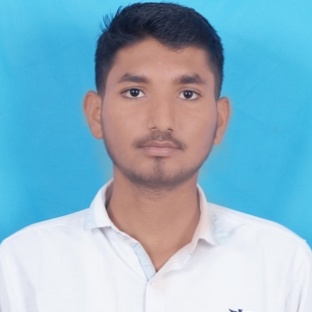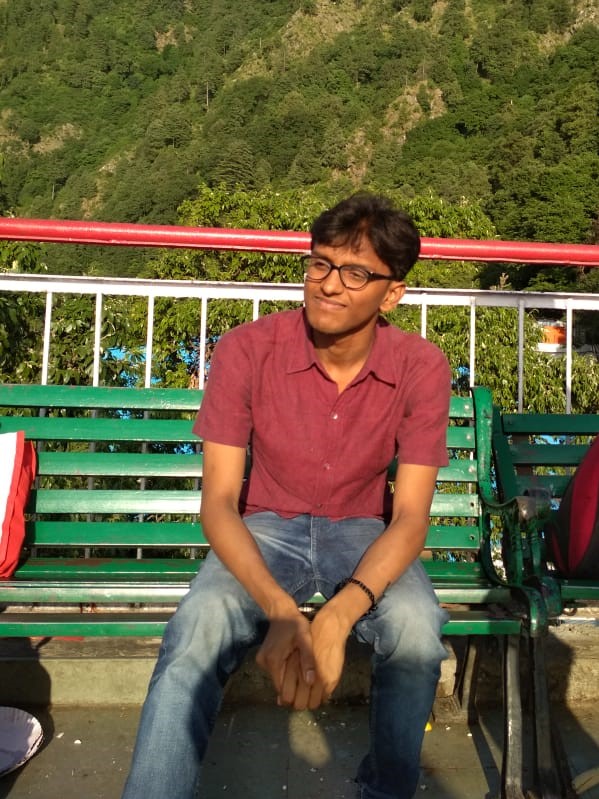Vaibhav Walunj
 “Social movements are at once the symptoms and the instruments of progress. Ignore them and statesmanship is irrelevant; fail to use them and it is weak.”
“Social movements are at once the symptoms and the instruments of progress. Ignore them and statesmanship is irrelevant; fail to use them and it is weak.”
– Walter Lippmann
Indian political discourse after the life of Babasaheb Ambedkar would remain incomplete without acknowledging the Bahujan movement led by Kanshi Ram. This movement shook the political ground of India at large and of north India in particular. It created space for Dalit-Bahujans to stake claim to political power, rather than merely being vote banks of savarna candidates. The movement was molded and strengthened with the statesmanship of Kanshi Ram—a scientist who transformed into a powerful militant Ambedkarite. He remains a powerful and relevant force in the present, as can be gauged from instances where marginalized students have been expelled from institutions for observing his death anniversary. It is important for us to explore his ideas as well as to deliberate on the implications of his work for our political future, especially as contemporary strategies and leadership seem to be failing and proving to be weak.
Kanshi Ram was born into a Ramdasiya Sikh family in Punjab. Thanks to Sikhism, he faced relatively less caste-based discrimination while growing up and largely remained untouched by harsh atrocities and severe caste conflicts. Later in life, he moved to Pune—the parochial city where Bahujans have been victims of oppression since the 17th century—for his work in DRDO’s Explosive Research and Development Laboratory. At that time, the state of Maharashtra was the epicenter of a radical movement, where the Bhagavat Geeta was being burnt publicly. Kanshi Ram got his training and nourishment on these radical fields of the movement.
In a way, the dyed-in-the-wool city of Pune and its myopic elite pushed him outwards and resultantly towards an active full-time movement that completely altered the paradigm of power in the country.
It was in Pune that he read the writings of Ambedkar, particularly ‘Annihilation of Caste’, and thereafter began his lifelong struggle for freedom through political means. He started BAMCEF and DS4 (Dalit Shoshit Samaj Sangharsh Samiti) as social organizations. These movements culminated in the formation of the Bahujan Samaj Party (BSP) in Uttar Pradesh, which carved its own political space as opposed to becoming chamchas (boot-lickers) of the mainstream political parties or merely playing the role of token representatives for projecting a false sense of inclusion and diversity. Though, the picture has not changed much since then, except for the approach of such leaders. It has been widely altered as they treat Dalits as any other community which has its leaders scattered across the spectrum of parties, thus advocating and practicing political equality.
If Babasaheb Ambedkar was Marx for the Indian proletariat, Kanshi Ram was first among his flag-bearers who played the role of Lenin and built his signature political dynamics and theory on the foundation of Babasaheb’s thoughts. Ambedkar’s political philosophy that foregrounded the upliftment of the last person in society did not gain significant power during his stint in electoral politics, largely because voters in pre-independence elections were selected based on the criteria of income, land ownership and rent. Contrary to this democracy for the privileged, Babasaheb always championed the rights of the sections that were excluded from the mainstream as is evident from his parties’ names—’Scheduled Caste Federation (SCF)’, ‘Independent Labour Party (ILP)’ and the ‘Depressed Classes Federation (DCF)’. These parties stood distinctly apart from the political discourse of the Indian National Congress working towards achieving political independence from the British. Kanshi Ram created a broad base of a political class that included not just the Dalit voters, and carved its own political space as opposed to becoming chamchas (boot-lickers) of the mainstream political parties or merely playing the role of token representatives for projecting a false sense of inclusion and diversity He mobilised a formidable alliance against the majoritarian politics that was to come in the future. His vision and efforts for social engineering are relevant even today, and a lot of studies that show Dalits’ voting patterns confirm that. Even though the BSP has its roots in SCF and Republican Party of India (RPI), its performance on indices of social mobility has been very disappointing. Social mobility is the next crucial step that Dalits dreamt of after capturing political power.
Two major features of Kanshi Ram’s politics that are widely discussed are: his strong refusal to partake in dynastic and opportunistic politics. Nurturing a woman protégé like Mayawati to lead the party was a masterstroke (noteworthy parallel is Jayalalithaa as the successor of MGR in the non-Brahmin politics of Tamil Nadu). It put to rest accusations against the Dalit movement as chauvinist and male-dominated. It sent a strong message that the nature of patriarchy and casteism amongst the Dalits has a unique nature, which can neither be comprehended nor be comprehensively discussed by the savarnas. Kanshi Ram’s career started with the ‘Our Vote, Our Rule’ campaign. At different points in his political journey, he allied with the Congress, BJP as well as Samajwadi Party led by the Yadavs. It made the BJP weaker in UP, and it could return only recently through Modi & Shah’s ethno-nationalist agenda under the façade of development.
Kanshi Ram remained acutely aware of practical considerations in politics. When accused of opportunism, he said, “Yes, we are opportunists. We will seize every opportunity that comes our way”. Kanshi Ram’s example encouraged confident leadership amongst Bahujans and catalyzed the awakening of political consciousness at the national level, after the pioneering efforts of Babasaheb.
However, after Kanshi Ram the BSP has seen a swift moral downfall. The pendulum has swung from the radical slogans of ‘Tilak Taraju aur Talwar, Inko Maro Joote Chaar (trash the supremacy of the Brahmins, Baniyas and Rajputs)’ to later day slogans like ‘Haathi nahi Ganesh Hain, Brahma Vishnu Mahesh Hain (BSP’s symbol of the elephant is a symbol of the Brahminical deities)’ that attempted to align closely with Brahminical ideas. The wider social fabric that Kanshi Ram had laboriously knit together shrunk to be a puny handkerchief of Jatavs during Mayawati’s time. Ironically, Mayawati became the heir of BSP, when the very reason why she was promoted by Kanshi Ram was to oppose dynastic control over the party. This affected the reach of BSP outside of north India. It was Kanshi Ram who attempted to bring together the oppressed, including Dalits, Bahujans, Christians, and Muslims, across India during his iconic bicycle rally that covered over 3000 kilometers from Kashmir to Kanyakumari, but the contemporary pan-Indian Dalit politics barely mentions the role of BSP. Christophe Jaffrelot argues, “Kanshi Ram not only warned Dalits that they were being used by communal forces against Muslims, he was also concerned about the role of other minorities in nation building other than the Dalits”. The recent attempts of a coalition with OBCs, Muslims and cultural amalgamation with Bahujans by Prakash Ambedkar and Navayan Mahajalsa find their roots in the equation formulated with Kanshi Ram’s broad political vision.
Mayawati did it all that Kanshi Ram once consciously avoided. Her bhai-bhateeja dynasty, irrational opportunist equations, and totalitarian rule alienates Dalits and endangers the life legacy of Kanshi Ram. Unfortunately, the successors of radical resistance movements have often been accused of hypocrisy and opportunism, be it attempts of demolishing Sher-e-Kashmir Sheikh Abdullah’s grave or criticism of Gandhi-Nehru or accusing Martin Luther King Jr of being an agent of the Whites and for undermining Black power. Today, Abdullah’s grave remains the most militarized grave in Asia; no one lauds the heritage of Dr. King Jr, Gandhi or Nehru; and people who witnessed the charm of the Kashi Ram era are too on a decline. This politics is being replaced by Bhim Army’s radical approach and attempts of building new coalitions of the oppressed by the generation 2.0 of Ambedkarites, such as Pa Ranjith, Sujat Ambedkar, Suraj Yengde, and Jayan Cheriyan. Unfortunately, these young leaders seldom speak about the Bahujan Nayak Kanshi Ram; they are often critical of the BSP.
Often they are critical of the BSP which they feel it is time to be tough and harsh towards atrocities, social injustice. And they aren’t ready to wait further when privileged sections are portraying Dalits through Bob Dylan’s songs and a bunch of ignorant rappers who ask “Kaam shuru kare kya” and grab fame without recognising Ambedakarite aesthetics. The shallow advocacy of Dalits by the privileged has to be answered with newer avenues that Kanshi Ram dared to explore. Oppressors cannot determine the mode of resistance that the oppressed choose, neo-Ambedkarism will find newer possibilities of resistance themselves.
Kanshi Ram’s proximity to the social revolution was largely limited due to his political aspirations. Not all of his ideas have lost relevance today; arguably, they need to be used as a tool for social mobility. His wisdom started the movement as a revolt but the silent revolution has lost its continuum as it failed to alter people and institutions. The neo-Ambedkarite generation which can’t wait for change, which thinks WAIT means NEVER, shall they preserve the legacy of Kanshi Ram’s idea of being king than kingmaker? Only time has the answer.
~~~
Vaibhav Walunj is a student of Journalism and Mass Media at Ranade Institute, Pune. He is also Vice-President of ‘Team Eklavya’, which works towards educating SC/ST students in remote regions with ‘Change through Education’ through a network of libraries, youth resource centres and academies. He is working as a Design Engineer for Tata Technologies Limited.










